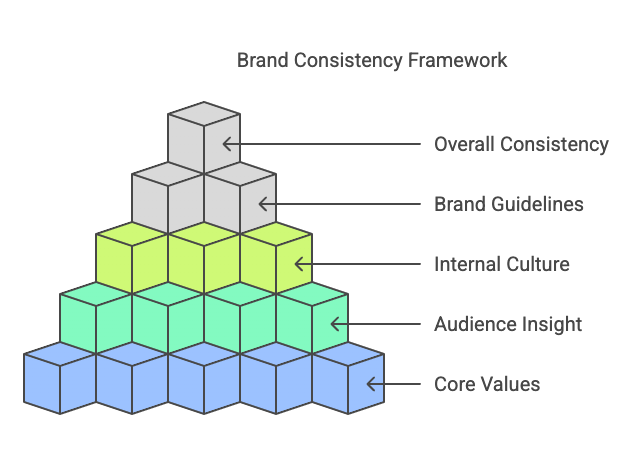People like to talk a lot about the importance of consistent branding without saying how. It’s obvious that it’s important for a brand to maintain a cohesive personality across all its platforms. Consumers trust brands they know, they’re more willing to work with brands they recognize.
That’s just basic marketing.
Essentially, what does it actually mean to be consistent? What exactly is brand consistency, and how can you ensure you retain it with your own business? Let’s talk about that.
A Strong Foundation
Just as one of the first pieces of advice a writer will receive about creating believable characters is to focus on a few core traits and build out from there, so too, believe it or not, establishing a brand’s personality is pretty much the same process. Therefore, what are your business’s values?
Building upon that, what did you create your organization to achieve, and why? Crucially, these ideals should be the pillars through which your brand defines itself both online and off.

Relatable Language, Intelligent Topic Selection
Look at how your audience communicates with one another. In addition, what sort of language do they typically use? What kind of content resonates with them, and what matters to them?
This should inform your brand’s online persona and tone just as much as your values. Furthermore, it should serve as a baseline for the kind of topics you focus on with your content marketing. Consequently, this ensures your content aligns with your overall brand identity. Everything comes back to that one question – the question of what your audience cares about, and how you can best give that to them.
Internal Culture
Therefore, it is absolutely critical that you align internal culture with external marketing. Specifically, if your business’s corporate culture doesn’t mesh with the values it claims to care about – if there’s an internal disconnect between how your marketing department presents itself online and how leadership treats employees – then people will find out. And when they do, there will be a reckoning.
Never mind the fact that it’ll likely lead to a great many frustrated, unproductive employees.
Clear-cut Brand Guidelines
Therefore, with all the above in mind, establish several sets of guidelines that guide people through how to use corporate assets. To begin with, there should be branding guidelines for business partners, for your marketing staff, and for your sales team.These should include the following details:
- Language to use
- Language to stay away from
- Tone of voice
- An explanation of the different assets available to them
- Acceptable use standards for those assets
Consistency is Key
As you can see, there are a lot of things that go into consistent branding. Nevertheless, even with all of the above, it’s really not so difficult. The most important thing is to just make sure you understand your audience and that your marketing has a strong foundation, grounded in clear corporate values.
From there, everything else should fall into place with ease.




